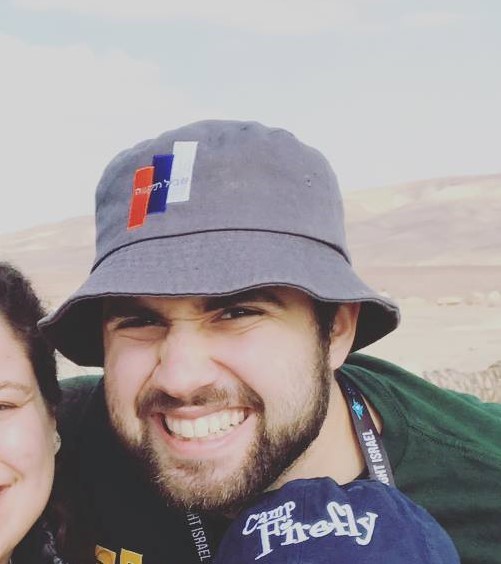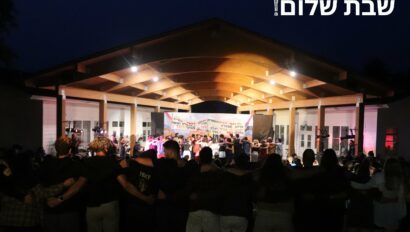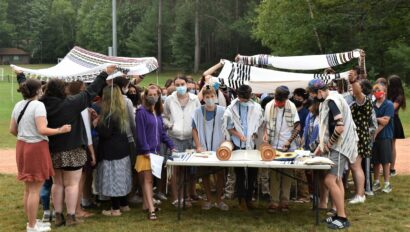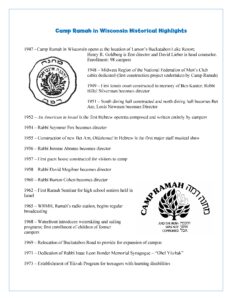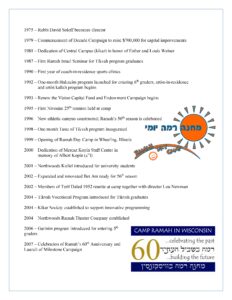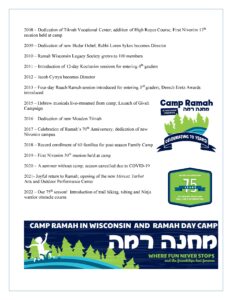Please enjoy a D’var Torah this week from Sam Weiner who will be returning for his second summer as Rosh Atzmayim. Sam has been at Ramah since he was in Rishonim and has spent his summers on Tzevet working as a Madrich for Tikvah and Atzmayim. He will be graduating from the University of Wisconsin-Madison this spring studying Communication Sciences and Disorders.
Shelter from the Storm: Reflections on Parashat Pekudei
by Sam Weiner
This week’s parashah, Pekudei, serves as a conclusion to both Sefer Sh’mot (Exodus) and the construction of the Mishkan (Tabernacle). After gathering all sorts of materials including everything from gold to goat hairs, the Mishkan finally stands as a suitable habitat for God to dwell in.
(כִּי֩ עֲנַ֨ן יְהוָ֤ה עַֽל־הַמִּשְׁכָּן֙ יוֹמָ֔ם וְאֵ֕שׁ תִּהְיֶ֥ה לַ֖יְלָה בּ֑וֹ לְעֵינֵ֥י כָל־בֵּֽית־יִשְׂרָאֵ֖ל בְּכָל־מַסְעֵיהֶֽם׃ (שמות מ:ל״ח
For over the Tabernacle a cloud of the LORD rested by day, and fire would appear in it by night, in the view of all the house of Israel throughout their journeys. (Exodus 40:38)
God’s appearance to the Israelites as a cloud by day and fire by night seems to be the most practical form to take in order to properly shelter the Israelites while they wander throughout the desert. A cloud serves as a shield from the blistering heat and the fire warms the people at night when it is uncomfortably cold. God as cloud and fire isn’t a symbol of protection in the Middle Eastern wilderness, it is actual protection. Today, however, Jews live all over the world – in different climates and with different material needs – and so this uniform image of God as either cloud or fire doesn’t necessarily have the same significance. How does God appear to us today as a symbol of shelter if at all?
When I was a chanich (camper) in 2010 we saw a strong storm on the horizon and so after eating dinner we were escorted to the martef (underground shelter) to wait until it passed. Outside the rain was blinding, the thunder booming, and the wind so powerful that trees were falling over and canoes were blown onto the Kikar. I expected to spend that night wondering what was happening outside and waiting impatiently until we would be able to go back to our tzrifim (cabins). Instead, the night turned out to be one of the best of the summer with my eidah-mates passing the time shouting “Yehi Sheket!” (Be quiet!) chants, playing cards, and singing the night away with songs from our upcoming play. By the time the storm was over and we could return to our tzrif I was almost disappointed that our “sheltering” had to end.
Camp Ramah serves as a shelter in many different capacities. For chanichim, camp serves as a Jewish playground, a haven for exploring interests and meeting amazing people. For members of Tikvah and Atzmayim, two of our programs for young adults with special needs that I have had the joy of working for over the last five summers, camp is a safe space where inclusion is promoted in all aspects of life. Camp is a shelter from the stresses of everyday life and a place where being Jewish is a source of pride for all who come. Even without the image of clouds or fire, just seeing lifelong bonds established among friends is plenty of proof to me of the presence of God within Camp Ramah.
